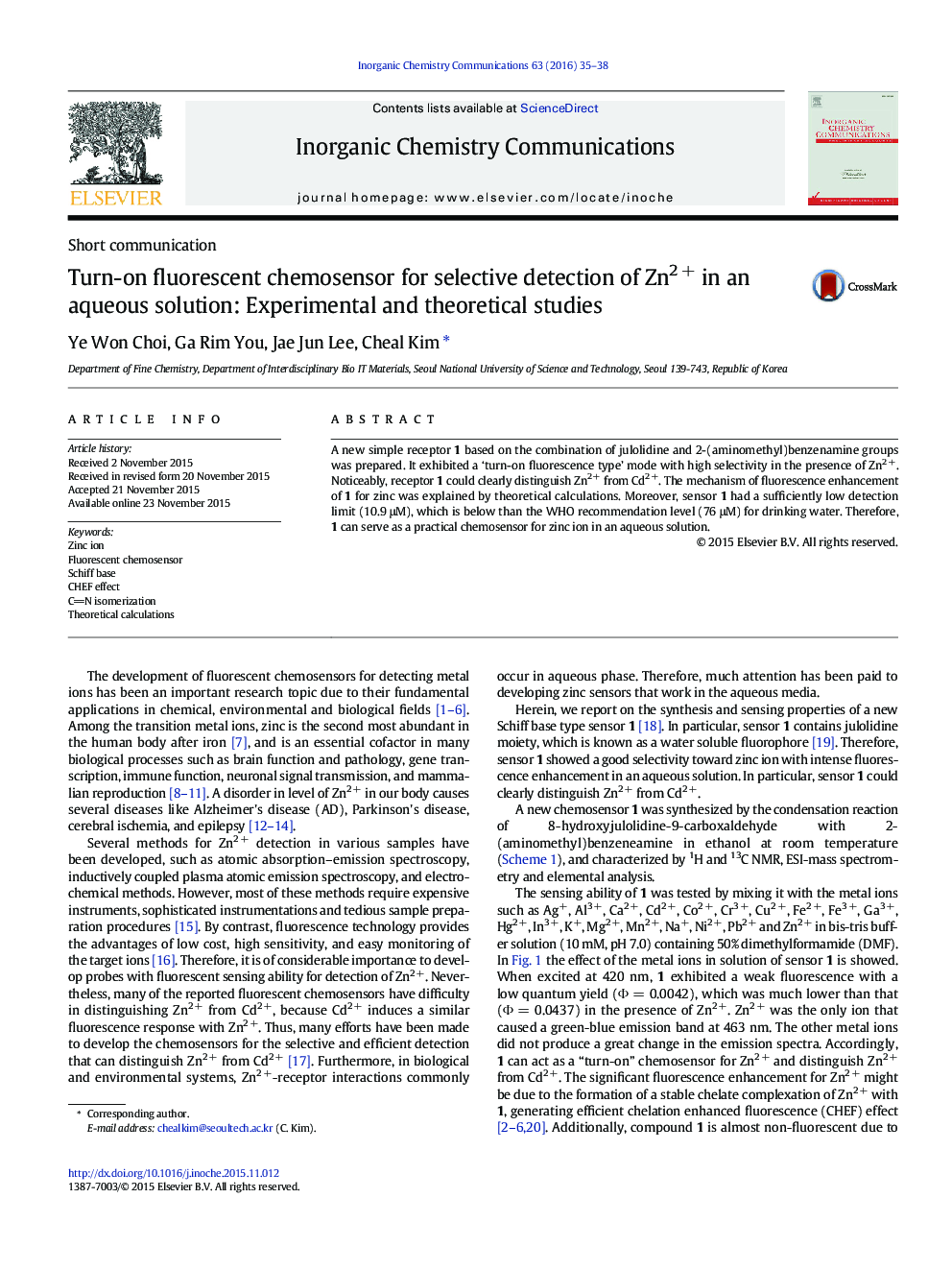| Article ID | Journal | Published Year | Pages | File Type |
|---|---|---|---|---|
| 1305308 | Inorganic Chemistry Communications | 2016 | 4 Pages |
•A new Schiff based receptor 1 was developed as a fluorescent Zn2 + sensor.•It could detect Zn2 + ions at lower concentration than WHO guideline in drinking water.•This sensing ability was explained by theoretical calculations.
A new simple receptor 1 based on the combination of julolidine and 2-(aminomethyl)benzenamine groups was prepared. It exhibited a ‘turn-on fluorescence type’ mode with high selectivity in the presence of Zn2 +. Noticeably, receptor 1 could clearly distinguish Zn2 + from Cd2 +. The mechanism of fluorescence enhancement of 1 for zinc was explained by theoretical calculations. Moreover, sensor 1 had a sufficiently low detection limit (10.9 μM), which is below than the WHO recommendation level (76 μM) for drinking water. Therefore, 1 can serve as a practical chemosensor for zinc ion in an aqueous solution.
Graphical abstractA new simple chemosensor 1 based on the combination of julolidine and 2-(aminomethyl)benzenamine groups was prepared for a ‘turn-on fluorescence type’ mode in the presence of Zn2 +. Noticeably, receptor 1 could clearly distinguish Zn2 + from Cd2 +. The mechanism of fluorescence enhancement of 1 for zinc was explained by theoretical calculations, and 1 had a sufficiently low detection limit (10.9 μM), which is below than the WHO recommendation level (76 μM) for drinking water.Figure optionsDownload full-size imageDownload as PowerPoint slide
